#angular 8 questions asked in companies angular 8 questions asked in interview
Explore tagged Tumblr posts
Text
Top Strategies to Hire Expert MEAN Stack Developers
Hire dedicated MEAN developers to build scalable, high-performing web applications. Find expert MEAN stack developers in India for your next project.
Introduction
In today's digital landscape, businesses need robust and scalable web applications to stay ahead of the competition. The MEAN stack (MongoDB, Express.js, Angular, and Node.js) is a popular technology stack that provides end-to-end JavaScript-based development. To ensure your project’s success, it's crucial to hire dedicated MEAN developers who can build high-performing applications tailored to your needs.

This guide will help you understand the best strategies to hire MEAN stack developers, the benefits of hiring expert developers, and how to find the right talent for your project.
Why Hire MEAN Stack Developers?
Hiring dedicated MEAN stack developers comes with several advantages:
Full-Stack Expertise: MEAN developers handle both frontend and backend development seamlessly.
Cost-Effectiveness: MEAN stack simplifies the development process, reducing overall project costs.
Scalability & Flexibility: Ideal for startups and enterprises requiring scalable solutions.
Faster Development: JavaScript-based stack enables rapid development and deployment.
Strategies to Hire Dedicated MEAN Developers
1. Define Your Project Requirements
Before starting the hiring process, outline your project’s needs, such as:
Type of application (e-commerce, SaaS, enterprise solution, etc.)
Features and functionalities required
Budget and timeline
2. Look for Experienced MEAN Stack Developers
When hiring, focus on candidates with experience in:
MongoDB: NoSQL database management
Express.js: Backend framework for building APIs
Angular: Frontend framework for creating interactive UI
Node.js: Server-side runtime environment
3. Consider Hiring from MEAN Stack Development Companies
Partnering with a MEAN stack development company in India ensures access to skilled professionals who follow industry best practices.
4. Assess Technical Skills
Evaluate candidates based on:
Coding Proficiency: Check knowledge of JavaScript, TypeScript, and frameworks.
API Development: Understanding of RESTful APIs and microservices.
Database Management: Expertise in MongoDB and data modeling.
Version Control: Familiarity with GitHub/GitLab.
Problem-Solving Abilities: Ability to troubleshoot and debug effectively.
5. Check Previous Work & Portfolio
Ask candidates to share:
Past MEAN stack projects
GitHub repositories
Live application links
6. Conduct Technical Interviews
Prepare interview questions on:
MEAN stack components
JavaScript frameworks and best practices
Handling real-world scenarios and performance optimization
7. Choose the Right Hiring Model
Depending on your project needs, you can:
Hire dedicated MEAN stack developers for long-term projects.
Hire MEAN stack programmers in India on a contractual basis.
Outsource to MEAN stack development services India for flexible team scaling.
8. Evaluate Soft Skills
Apart from technical expertise, assess candidates for:
Communication Skills – Essential for team collaboration.
Problem-Solving Ability – Helps in efficient project execution.
Adaptability – Willingness to learn and upgrade skills.
9. Use Job Portals & Freelance Platforms
Post job listings on:
LinkedIn
Upwork
Toptal
Indeed
10. Competitive Salary & Benefits
To attract top talent, offer:
Market-competitive salaries
Remote work flexibility
Learning and development opportunities
FAQs About Hiring MEAN Stack Developers
Q1. Why should I hire MEAN stack developers instead of separate frontend and backend developers? A1. MEAN stack developers handle both frontend and backend development, reducing project complexity and costs.
Q2. How much does it cost to hire MEAN stack developers in India? A2. Hiring costs vary based on experience, location, and project scope, typically ranging from $15 to $50 per hour.
Q3. Can I hire MEAN developers on a part-time basis? A3. Yes, you can hire dedicated MEAN stack developers on a part-time, full-time, or contractual basis.
Q4. How do I verify a MEAN stack developer’s expertise? A4. Assess their technical skills through coding tests, interviews, and reviewing past projects.
Q5. What industries benefit from MEAN stack development? A5. Industries such as e-commerce, healthcare, fintech, and SaaS platforms benefit from MEAN stack applications.
Conclusion
Finding the right MEAN stack developers for hire is essential for building scalable and efficient applications. Whether you hire dedicated MEAN stack developers from India or choose a development company, ensure they have the right skills, experience, and problem-solving abilities. Follow these hiring strategies to secure top MEAN stack talent for your project’s success.
Call to Action
Looking to hire MEAN stack developers in India? Contact us today to get started with top-tier MEAN stack talent!
Referral Link: Discover jobs more easily with a jobformautomator AI extension.
#HireMEANDevelopers#MEANStackDevelopers#HireDedicatedMEANDevelopers#MEANStackDevelopment#HireMEANStackDevelopersIndia#MEANStackProgramming#HireTopMEANDevelopers#MEANStackDevelopmentCompany#FullStackDevelopers#HireMEANStackExperts#WebDevelopment#NodejsDevelopers#MongoDB#Angular#ExpressJS#HireMEANProgrammers#DedicatedMEANDevelopers#HireMEANStackDeveloperIndia
0 notes
Text
angular 8 notes
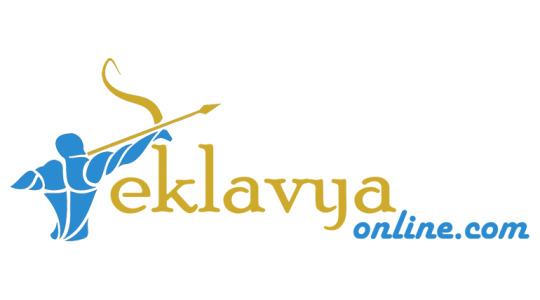
angular 8 notes, angular 8 questions asked in companies, angular 8 questions asked in interview, angular 8 questions asked in mnc, angular 8 questions for interview, angular 8 tutorials, complete notes on angular 8, complete tutorials on angular 8, faq for angular 8, faq on angular 8, interview questions on angular 8, latest interview questions on angular 8, most asked angular 8 interview questions, notes on angular 8, rapid fire on angular 8, rapid fire questions on angular 8, top interview questions on angular 8, tutorials on angular 8, updated interview questions answers on angular 8, angular 8 interview questions
0 notes
Text
Top 25 Web Designing Interview Questions and Answers for Experienced
1. Which are the most frequently used platforms and languages for site designing?
These are the main platforms or languages used for designing:
• HTML is that stands for Hypertext Markup Language, which will help design the template.
• CSS that stands for Cascading Style Sheets can be used for styling the webpages.
• JS that is JavaScript, can be used to code the operation.
2. What's HTML?
HTML is Hypertext Markup Language that is the most popular language for creating web pages or sites.
3. What's the use of CSS in web designing?
CSS or Cascading Style Sheets are essential to provide the appearance and feel of any site. 1 shift in the CSS file may switch to the whole site because webpages recover data each time and display it.
4. What's the external style sheet?
An external style sheet is a record that comprises the design information for many webpages or HTML documents. The external CSS is generally linked via the hyperlink tag that comes beneath the HEAD element. This external CSS using the components should have the applicable extensions like style.css.
5. Differentiate between HTML components and HTML tags?
HTML elements are utilized to communicate with the browser to render text. HTML tags are components surrounded by angular brackets. HTML tags surround text and come in pairs.
6. What's Semantic HTML?
Semantic HTML finds a programming style where the labels indicate that the semantics of text are hauled. Semantic HTML only signifies formatting with no construction or meaning.
7.Explain the term DOCTYPE.
The expression DOCTYPE communicates into the browser which kind of HTML has to be utilized on a web page. Subsequently, the browser uses DOCTYPE to ascertain how a page has to be left. Not using DOCTYPE can load the webpage in the wrong manner.
8.Explain the difference in Standard Mode and Quirks Mode.
This causes inconsistent look in different browsers.
Usual manner is a consistent manner of screen used across all browsers.
9. What are the shortcomings of XHTML pages?
XHTML has inferior browser support. Internet Explorer and other browsers can't parse XHTML to XML.
10. How can you add remarks into HTML code without any text being picked up?
To insert comments into HTML code, you need to set them between and<--!>.
11. Differentiate between linking to a picture, email address, and site
The picture has to be enclosed in quotations with origin feature src from the opening tag.
To connect into a hyperlink, an anchor tag is used, and also the destination connection is defined in the feature. The text where the hyperlink is set has to be between anchor tags.
12. What might be the issue of this hyperlink or image isn't displaying properly?
Reasons for hyperlink or image not displaying properly are a missing quote, tag, bracket for href, alt or src text.
13. Describe the distinction between a numbered list plus a bulleted list.
Lists which are bulleted utilize the
tag that means unordered, whereas arranged lists utilize
tag.
14. Explain the difference between and tags?
It is a container for styling components while it can be used to create branches inside a web page. Has to be used alongside the tag.
15) Mention what a few terrible examples of web layout are?
· Blinking, flashing, or turning images
· Black background with white, light, or light text
· Black backgrounds with dark text
· Lively tiled background images with any color text
· Everything Created
· Too many images or Tremendous graphics
· List of connections
· Too many headlines or Blinking text
16) Explain how do you align the image so you could be greater or lower than another?
To align image so that one could be greater or lower than another, make use of the align announcement on your IMG SRC tag.
17) Explain what a Dreamweaver Template is?
Dreamweaver Templates allows webmasters to specify"non-editable" and"editable" areas of a page, just in the Dreamweaver template that the"non-editable" areas can be edited. Any changes implemented into the Dreamweaver Template will upgrade any HTML pages which use the template.
18) In CSS, if you'll utilize CSS float?
In CSS, you'd use CSS float if you would like to earn an element of your webpage be pushed into the left or right and make different components wrap around it.
19) As a web-designer while declaring the "delete" button, what would be your color choice?
Create the"Publish" button prominent by utilizing color like Red, particularly once you need to display two buttons side by side. Red is an indication of warning, so that will surely assist the consumer in drawing their focus.
20.Just how many H1 tags could you have on a single page, and why?
Employers can ask more specific design questions to learn which degree of knowledge that you have of HTML and SEO to meet you as a candidate.
21.How can you mix fonts and the number of types you will use on a single site?
Fonts are an essential design component, and you ought to have a fantastic grip on font use.
22.What's a CSS document, and what are a few advantages of using it?
CSS is widely utilized in web designing. Employers need to know you're comfortable with this and will require little to no instruction.
23.Have you got any expertise with UX layout?
While companies may not ask that you get experience with UX layout, it is important to understand what it is and discuss how you can apply it for your work.
24.What's W3, and how can you stick to it on your website design?
Employers want to understand your familiarity with W3 standards because compliance must guarantee website designs may be available in most browsers.
25. Have you ever utilized HTTP or HTTP/2 on your previous design solutions?
HTTP and HTTP/2 are system protocols specially created to boost the operation of internet pages. Employers are searching for a candidate with basic understanding.
Know more
1 note
·
View note
Text
How To Find AngularJS Interview Questions [+With Example]
A great interview can help you to get insights into the developer's expertise and experience. If you plan to interview an AngularJs developer, you must require some research guide or gathered information. A researched material would help you examine the candidate's skills, knowledge, and experiences. With that in mind, we have prepared a step-by-step guide to help you find the AngularJs interview questions you should probably ask. Look at this informative guide to learn how to determine the interview questions before interviewing the candidate.
Principle Of Writing An Angular Developer Interview Questions
The mentioned guidelines will help the AngularJS development company to develop a list of interview questions-
The list of questions should be clear and concise. Try not to ask more than one question at a time.
Ask questions that elicit the most extended answers from the candidate. Avoid asking questions that can answer in one or two lines.
Do your analysis correctly, don't ask the candidate to do research or something.
Do not ask for opinions on the community in which they work, like- "How does the team manage it?" You will not get an optimistic answer.
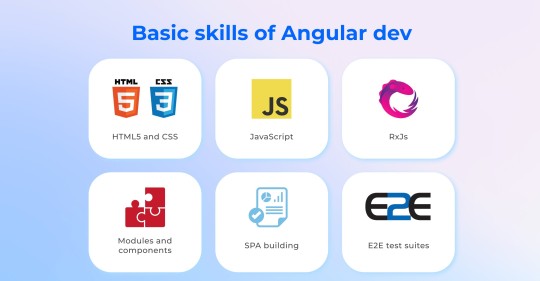
5. Feel free to ask embarrassing questions to identify Angular developer skills and the ability to think.
6. Ask them about their experiences and what they have learned from their experiences.
Types of Angular developer Interview Questions
Here is the list of Angular developer interview questions that help you determine when and what to ask-
A. Credential verification questions
This type of question includes information like "What is your percentage in 10+2?" and "How many years have you worked with XYZ company?" Here you verified the information mentioned in their resume. It would help in verifying their credentials and verified information.
B. Opinion questions
These questions are being asked when you need to understand their inner self. Questions like "What would you do in this situation?" and "Tell me about your weaknesses" helps in analyzing how they would respond in such situations.
C. Behavioral questions
This question includes "Give an example of how you did that?" and "What process do you follow to determine better results?" It helps in measuring their past behaviors and their optimistic behavior.
D. Competency questions
The questions like "How can you determine the leadership skills?" or "What steps you'll take to finish this task" are being asked to examine their past behaviors with specific required competencies.
E. Nonsense questions
The questions like "What kind of cinema do you like?" and "Do you love exploring food?" ask to find out if they are capable of original thought. This question is asked to test your ability to think on your feet.
How to Write Interview Questions?
1. Identify and summarise the study's main research questions. Describe the broad knowledge domains that are needed to respond to these issues.
2. Create questions inside these critical categories, tailoring them to different types of respondents. Utilizing their knowledge and expertise is the main objective here.
3. Modify the interview's language based on the respondent (child, professional, etc.).
4. Be careful how you phrase your questions to encourage respondents to provide as detailed and accurate answers as possible.
5. Focus on "how" questions rather than "why" to know their background stories. "What inspired you to do this?"
6. Create probes to elicit more extensive and in-depth answers to important questions.
7. Start the interview with a "warm-up" question that will allow the respondent to answer more fully and readily (though not too long).
8. Consider the interview's logical flow. What subjects need to ask first? Adjust the asking pattern accordingly.
9. You should ask difficult and tricky questions at the end of the interview.
Top 3 AngularJS Interview Questions and Answers
1. What are the steps to test an AngularJS filter?
Inject the module with a filter.
Include mocks which the filter relies upon.
Add the filter using $filter('yourFilterName').
Insert your expectations.
2. Where should we implement the DOM manipulation in AngularJS?
DOM Manipulations don't exist in controllers, services, or anywhere. It only existed in directives.
3. What are Directives?
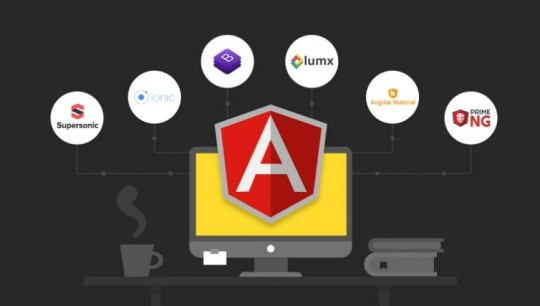
An AngularJS framework directive is a marker on a DOM element (such as an attribute, element name, comment, or CSS class) that instructs the HTML compiler ($compile) to alter the DOM element and its descendants or to attach a specific function to the DOM element.
Summing up
We hope you like the article. Next time you interview an Angular developer, don't forget to look out for these tips to ask the best questions to them. Good luck :)
Follow us on LinkedIn for free eBooks and resource material!
Thanks for reading :)
#AngularJs Interview questions#angularjs 7 interview questions#interview questions on angularjs#angularjs interview questions for experienced professionals#angularjs interview questions and answers
0 notes
Text
Some FAQ’s about Angular
In this article, we are going to clear your fundamentals of angular by answering some frequently asked questions that not only help you to get prepared for the interview but also help you to revise your basics of angular. The answers provided in this article are easy to understand and they may help you to grasp your dream job.
Here we begin, be prepared
First, start with some basic question
Question-1. What is angular?
Answer- It is a client-side framework developed by google which creates web applications that run on javascript. It covered a wide variety of features such as form management and routing.
Question-2. Is there any difference between angular and angular js?
Answer- yes, angular and angular js are different from one another in many ways. Some of them are:
Language; angular js is written in the javascript subset whereas angular is written in the typescript subset.
Structure: angular structure can be easy to manage while angular js are less manageable
Mobile support: angular offers mobile support whereas angular.js doesn’t.
Routing: angular uses @RouteConfig{(…)} while angular js uses $routeprovider.when()
Question-3. Why angular was introduced?
Answer- earlier programming languages like vanilla is used to create dynamic web applications. But after some time it becomes difficult to write code in them due to their changing features. Therefore angular is constructed to solve this issue which provides the feature of the client-side framework.
Question-4. Over other frameworks, why should you prefer the Angular framework?
Answer- There are various advantages of angular over other frameworks. Some of them are
As dynamic web pages are created through angular because they provide various features such as two-way binding, modularisation, dependency injections, etc.
It is supported by a large company i.e Google.
Testing application is easier in angular as compared to other.
Restful services and validation are supported in angular
Upgrades are easy to apply
Question-5. Define bootstrapping?
Answer- In angular, bootstrapping is usually used to start the application. manual and automatic both kind of bootstrapping is supported in angular.
Question-6. List the key component of angular?
Answer- there are various key components of angular. Some of them are:
Component( basic blocks to control HTML views)
Module (angular application are broken down into logical pieces which are then called module which performs a single task.)
Service (create components that are shared in the entire application.)
Metadata (used to add data in angular class)
Templates (show the view of angular application)
Question-7. What is the function of ngFor directive
Answer- The function of ngFor directive is to display each item in the list.
For instance,
<li *ngFor="let user of users">
{{ user }}
</li>
Question-8. Define pipes?
Answer- the function of pipe is to take input data and covert it into desired output.
For instance
import { Component } from '@angular/core';
@Component({
selector: 'app-birthday',
template: `<p>Birthday is {{ birthday | date }}</p>`
})
export class BirthdayComponent {
birthday = new Date(2002, 3, 05); // march 05, 2002
}
There are many more topics that come under Angular. This is just the beginning. Various paths will open for you once you clear your interview.
Dzone comes with the opportunity for you to learn angular at an optimum cost. Our training is delivered to you by professionals that will help you grasp skills in Angular components, Bootstrap, TypeScript, etc. with working on real-time projects. You don’t need any high qualifications and certification to learn angular. All you need is proper counseling about it which will be provided here.
Get yourself registered now and for more queries, you can visit our website
https://www.dzone.co.in/angularjs-training-in-jaipur.aspx
You can also contact us at 9829708506
0 notes
Text
Interview with Alice Howard Graham
1. Hi there Alice! What a pleasure it is to interview someone with such an extensive background in textile! Before we delve deeper, would you mind briefly telling me a little bit about yourself, and what inspired you to venture down the textiles path?
Hello Jade, thank you for inviting me to be a part of Infinite magazine. Right, okay where to begin! … I am a Printed Textile & Material Designer with over five years experience working in the luxury end of the fashion & interior industry, with clients including Paul Smith, Purdey, TOPSHOP, Farlows, Canepa S.p.A, Kehilian, Simo, Graham & Brown and House of Hackney.
I graduated in July 2012 with a First Class BA (Hons) in Textiles from UCA, Farnham, Surrey. From this I went on to be chosen as 1 of 24 UK graduate designers to take part in Texprint 2012, exhibiting and selling work at Premier Vision in Paris. Taking part in Texprint was a key moment in my career, as it gave huge exposure to my work. During 2013 to 2014 I worked as a Print Designer at Paul Smith, I then began the MA Textiles course at the RCA in September 2014. I completed the MA in July 2016 and am now currently based in London, continuing to work as a Freelance Designer/Consultant to the luxury apparel and interior industry as well as founder of my start-up brand DesignbyAlice.
Research is key to my design development: I am driven by the initial stages of gathering inspiration and knowledge through research trips and observing new environments and landscapes. Photography has always been very important to me, as it's often the starting point for my textile designs. I think an interest in photography as well as a passion for material tactility is what led me down the textiles path initially.
2. What was the basis of your interest in Design and textile?
So I think my initial passion for art and design should truly be credited to my late mother, the extremely talented painter and photographer Anne Howard (www.annehowardartist.com) Since a young age my mother taught me to paint, draw and express myself creatively through many different mediums. From teaching technical aspects of drawing through to afternoons spent painting flowers in the garden, and visiting exhibitions and interesting places for inspiration. I think her passion for observing, reflecting and recreating the objects and environments around us had a profound impact on me from a young age and is the reason I am where I am today.
3. Is textile something you learnt at school that you wanted to refine?
I think the idea of Textiles as a career path came to me whilst studying my A-Levels at Varndean College in Brighton, I studied Photography, Textiles & 3D Design and had such inspiring tutors there, the passion took off from that moment really. I always loved working with physical materials, particularly textiles and the varying depth of qualities and how the fabric is woven or knitted, before manipulating the surface through print processes.
4. Would you mind describing what inspires your work?
I am constantly inspired by the varying environments and landscapes we have on this planet, the diversity is very inspirational.
I am very inspired by experimenting with surface, placement and colour – developing my design ideas through the physical process of making, drawing, painting and collaging. My father has been a carpenter and builder his whole life and so I also feel that this 'hands-on' approach has been passed down from him, the desire to create and as well as challenge the materials with which we are working, considering the handling, structure and composition of the material and how we can enhance and manipulate this.
5. Graduating in BA(Hons) Textiles, what made you embark on a MA in this chosen field?
Ever since graduating from UCA Farnham in 2012, I had always said I would like to do an MA one day, but truth be told – it was always either the MA at The Royal College of Art, or no MA at all! I had my heart set on the one place, not just because of the RCA's reputation but because of it's emphasis on industry live projects and the importance of interdisciplinary collaboration (working on projects with other MA courses/disciplines around the college). I knew I wanted to study textiles here because I knew I wouldn't just be continuing to refine my printing skills, but also my awareness of materiality in a much broader sense. The three key words that sum up my time on the MA are Collaboration, Communication and Confidence.
6. Prior to completing your MA, you worked as a print designer at Paul Smith, what was that experience like?! As someone who is currently completing a fashion degree, would you say that this industry is represented realistically to others? When I’ve completed internships, many people ask ‘is it actually like the devils wear Prada!?’
Paul Smith, I can hand on my heart say, was the best experience of my life so far! I think it marked a turning point from 'student' to 'designer'. I learnt to use my creativity and knowledge from my Printed textiles degree and apply it to commercial and wearable designs for Men's and Woman's clothing and accessories. In regards to the industry and it's representation, I think it all depends on the company and the team. Paul Smith himself is a very kind, open-minded and positive man, and I believe this is reflected in his brand. The team were so welcoming and friendly, every day I felt an up-lifting feeling walking into the building and in particular, the textiles studio. It was such a creative space. I think the company is built on strong morals and someone's personality and adaptability to fit into the team is as important as their CV/experience. But I am aware it is not like this throughout the entire industry (without mentioning names!) I have close friends who are working within some of the top fashion designer brands and they have encountered discrimination, bullying and been overworked/underpaid. Unfortunately though, I do not think this is something that is just contained to the designer level of the industry, I have also experienced bullying at the start of my career within a high-street company. But juxtaposed to this I now freelance for Topshop and can happily say that it is a very positive, welcoming and encouraging environment. So I think it is all dependent on where you go: If the top level (the managers/directors) are kind, then this all feeds down to create an overall positive working environment. I personally find work-place bullying or intimidation abhorrent, it should be monitored much more closely within many industries, not just the creative industry.
7. How did you find the progression from BA(Hons) to MA?
My BA in Textiles from Farnham was a fantastic learning curb in terms of gaining traditional skills such as weaving, screen-printing techniques, textile qualities and colour and dye processes. I learnt a lot from this course and found it to be a highly creative working environment. The progression moved on quite naturally to the MA I felt (even though I had a two year gap between finishing the BA and starting the MA). I still continued to use the screen and digital printing facilities on the MA, but you're constantly told to challenge yourself and your way of working, questioning and discussing everything was so important to my growth on the MA I think.
8. Do you feel in yourself that your work has strengthened by completing your MA?
I do feel my work has strengthened through carrying out my MA. I think it has led me to be much more open-minded in terms of the material/surfaces I work with, as well as the companies I look to for inspiration. I now feel like it is not just fashion brands that inspire me but a much broader spectrum of design companies, from architecture to product or graphic design – I find myself being inspired by colour, material and finish within many realms outside the area of 'textiles' as we know it.
9. Promise I won’t ask or mention the word MA now. On your website (designbyalice.com) you describe that you’re driven by the ‘initial stages’ of research, observing the ‘beautiful, the unusual or the seemingly mundane’. I think this is a wonderful approach to have. Would you say that one can create captivating work from materials or inspiration that aren’t conventionally beautiful?
Definitely, I think this is a really important notion you've tapped into here. It is a challenge but I find it fascinating when a person creates something visually beautiful from something that someone else might disregard or not look twice at. Beauty is in the eye of the beholder after all! Art & Design has always been there to challenge people's perception and make people stop and think. My final major project on my BA course was influenced by the Russian Constructivist movement. I had a keen interest in how the Constructivist designers represented their theories of Industry and the machine. My aim was to develop my own personal 21st century reflection of the industrial landscape where I grew up along the south coast of England. I therefore travelled from Dungeness to Newhaven, Shoreham and along to Southampton Port, observing the linear and angular patterns within industrial architecture and taking photographs of seemingly dull warehouses, shipping containers and power stations! The photographs were then combined with drawings to create graphic and geometric screen-printed textile designs. It was a new direction for me, as I have often worked with very natural and organic imagery in the past, at first I thought – oh god what have I done, I hate power stations and industrial 'scars' to the landscape! However, these industries of course provide jobs and have benefits to the communities, and actually there is something quite gritty and homely about English coastal ports, it's an important industry here in the South.
10. You’re now London based, do you find inspiration everywhere being in the big smoke?
There is nowhere quite like London is there? I love how multi-cultural it is, there is such a diversity in people and that of course leaks down into the diversity in fashion, design, music, food etc. There is so much inspiration at your doorstep in terms of galleries, exhibitions, shops, pop-up shows/events. However my favourite place will always be East Sussex, the landscapes carved out by the South Downs are imprinted upon everything I do. I feel so fortunate to have grown up in such a beautiful area, and I can understand why my mother was always so keen to paint the varying landscapes and seasons of the South Downs. I still visit Sussex every couple of weeks to get my dose of fresh air and reflection time.
11. What is your process with creating your work? As an outsider, it seems such an immense workload, how do you begin to tackle it with an imminent deadline?
I normally begin with a brief, whether set by myself or a client, and from this I will write down ideas, sometimes even if it's just words. I've always written things down, as well as visually recording through drawing/painting. But before I put pencil/paint to paper I like to go out and take my own photographs, I have folder of reference photographs I've taken in the past; of flowers, plants, landscapes, buildings etc , I think it is important to have as much visual sources as possible before starting a new project or design.
12. Referring again to your website, which is thoughtfully executed I might add, you describe that you’re continuing to work as a freelance designer/consultant to the luxury apparel. Would creating your own apparel be something you would be interested in?
I think I have always wanted to stick to the actual textile/material creation, rather than create my own clothing. Although I would never say no to collaborating with someone in the future to create a brand, but at the moment I am focusing on starting up my own small brand that produces bespoke commissions for interior pieces – supplying the actual fabric meterage rather than a finished product. Although I have longer term plans of creating products, at the moment it is a matter of time and patience (and funds!)
13. Is there a particular person/celebrity/group or otherwise which you look up to? Or a designer which you feel embodies your ethos?
I have never been much of a celebrity follower, however I respect people who stay true to their work ethos and passion, and who strive for honesty within their profession and industry.
I have always been inspired by Dieter Ram's '10 Principles of Good Design', I think he was a pioneer within the design industry.
I often find myself inspired by a wide range of different artists and design movements from the last century. Georgia O'Keefe's life story is incredibly inspiring for any woman I think, her work is particularly breathtaking. David Hockney's use of colour and composition is admirable. Whilst L.S. Lowry is also a strong favourite of mine, his depiction of the northern English landscape evokes a humble yet beautifully subtle awareness of the colour and environment he was surrounded by.
14. What advice would you give to someone thinking of pursuing an education/career in textile?
It is a marathon, not a race! No but seriously, I think when a person choses a career path in Art & Design, it is because you enjoy what you do and have a passion and imagination for creativity. Three things I would say to people is firstly, to have confidence in your work, secondly to also be willing to take constructive criticism and advice from other people, one of the most important things within designing, I believe, is to seek the opinion of others throughout the design process. You may decide that some of these comments aren't right for you, and that's okay to put them aside, as they have still been absorbed into your thinking/designing journey ... But I think all these opinions will inadvertently help shape your design process for the better. Thirdly and finally, persistence and dedication, don't give up. It is hard for any graduates when you first leave university, there is a lot of pressure on young people, I felt pressure and remember all too well that feeling of not getting a job that I wanted. But sticking with it, enjoying and believing in what you do is the most important thing.
15. The generic question that I always dread at family get together’s, but Alice, what are your future plans regarding your work?
I know, it's always the dreaded question for people isn't it?! I am going to continue to work on a freelance basis, as I enjoyed the nature of this work and the flexibility it can offer. Whilst also slowly building up my own brand in the rest of my spare time! It won't be a quick process, which works with me actually as I wouldn't want to rush anything, but I think starting with supplying one or two designs/products for now, the long term goal would be to have stockists around the UK as well as my own shop/gallery/studio/making-space in Sussex. I am learning a lot from my freelance work and working for a range of companies so I think that is good to continue with, but it's important to have ideas/dreams for the future, we never know what's around the corner.
0 notes
Text
angular 8 interview questions

angular 8 notes, angular 8 questions asked in companies, angular 8 questions asked in interview, angular 8 questions asked in mnc, angular 8 questions for interview, angular 8 tutorials, complete notes on angular 8, complete tutorials on angular 8, faq for angular 8, faq on angular 8, interview questions on angular 8, latest interview questions on angular 8, most asked angular 8 interview questions, notes on angular 8, rapid fire on angular 8, rapid fire questions on angular 8, top interview questions on angular 8, tutorials on angular 8, updated interview questions answers on angular 8, angular 8 interview questions
0 notes
Text
updated interview questions answers on angular 8
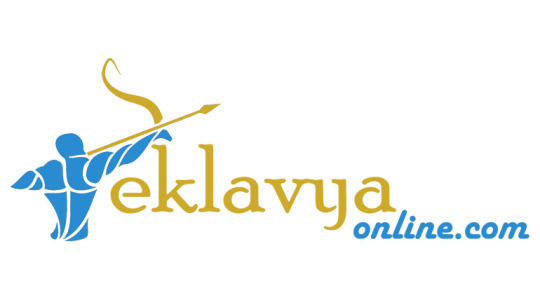
angular 8 notes, angular 8 questions asked in companies, angular 8 questions asked in interview, angular 8 questions asked in mnc, angular 8 questions for interview, angular 8 tutorials, complete notes on angular 8, complete tutorials on angular 8, faq for angular 8, faq on angular 8, interview questions on angular 8, latest interview questions on angular 8, most asked angular 8 interview questions, notes on angular 8, rapid fire on angular 8, rapid fire questions on angular 8, top interview questions on angular 8, tutorials on angular 8, updated interview questions answers on angular 8, angular 8 interview questions
0 notes
Text
tutorials on angular 8

angular 8 notes, angular 8 questions asked in companies, angular 8 questions asked in interview, angular 8 questions asked in mnc, angular 8 questions for interview, angular 8 tutorials, complete notes on angular 8, complete tutorials on angular 8, faq for angular 8, faq on angular 8, interview questions on angular 8, latest interview questions on angular 8, most asked angular 8 interview questions, notes on angular 8, rapid fire on angular 8, rapid fire questions on angular 8, top interview questions on angular 8, tutorials on angular 8, updated interview questions answers on angular 8, angular 8 interview questions
0 notes
Text
top interview questions on angular 8
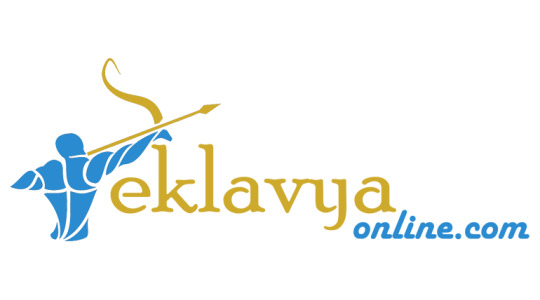
angular 8 notes, angular 8 questions asked in companies, angular 8 questions asked in interview, angular 8 questions asked in mnc, angular 8 questions for interview, angular 8 tutorials, complete notes on angular 8, complete tutorials on angular 8, faq for angular 8, faq on angular 8, interview questions on angular 8, latest interview questions on angular 8, most asked angular 8 interview questions, notes on angular 8, rapid fire on angular 8, rapid fire questions on angular 8, top interview questions on angular 8, tutorials on angular 8, updated interview questions answers on angular 8, angular 8 interview questions
0 notes
Text
rapid fire questions on angular 8

angular 8 notes, angular 8 questions asked in companies, angular 8 questions asked in interview, angular 8 questions asked in mnc, angular 8 questions for interview, angular 8 tutorials, complete notes on angular 8, complete tutorials on angular 8, faq for angular 8, faq on angular 8, interview questions on angular 8, latest interview questions on angular 8, most asked angular 8 interview questions, notes on angular 8, rapid fire on angular 8, rapid fire questions on angular 8, top interview questions on angular 8, tutorials on angular 8, updated interview questions answers on angular 8, angular 8 interview questions
0 notes
Text
rapid fire on angular 8

angular 8 notes, angular 8 questions asked in companies, angular 8 questions asked in interview, angular 8 questions asked in mnc, angular 8 questions for interview, angular 8 tutorials, complete notes on angular 8, complete tutorials on angular 8, faq for angular 8, faq on angular 8, interview questions on angular 8, latest interview questions on angular 8, most asked angular 8 interview questions, notes on angular 8, rapid fire on angular 8, rapid fire questions on angular 8, top interview questions on angular 8, tutorials on angular 8, updated interview questions answers on angular 8, angular 8 interview questions
0 notes
Text
most asked angular 8 interview questions
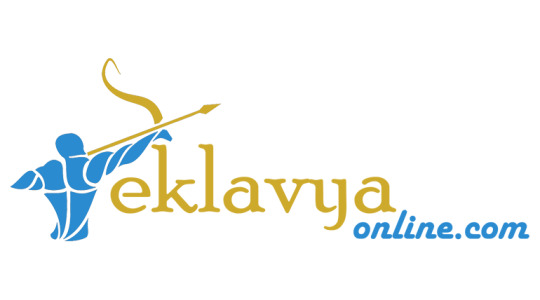
angular 8 notes, angular 8 questions asked in companies, angular 8 questions asked in interview, angular 8 questions asked in mnc, angular 8 questions for interview, angular 8 tutorials, complete notes on angular 8, complete tutorials on angular 8, faq for angular 8, faq on angular 8, interview questions on angular 8, latest interview questions on angular 8, most asked angular 8 interview questions, notes on angular 8, rapid fire on angular 8, rapid fire questions on angular 8, top interview questions on angular 8, tutorials on angular 8, updated interview questions answers on angular 8, angular 8 interview questions
0 notes
Text
latest interview questions on angular 8

angular 8 notes, angular 8 questions asked in companies, angular 8 questions asked in interview, angular 8 questions asked in mnc, angular 8 questions for interview, angular 8 tutorials, complete notes on angular 8, complete tutorials on angular 8, faq for angular 8, faq on angular 8, interview questions on angular 8, latest interview questions on angular 8, most asked angular 8 interview questions, notes on angular 8, rapid fire on angular 8, rapid fire questions on angular 8, top interview questions on angular 8, tutorials on angular 8, updated interview questions answers on angular 8, angular 8 interview questions
0 notes
Text
interview questions on angular 8
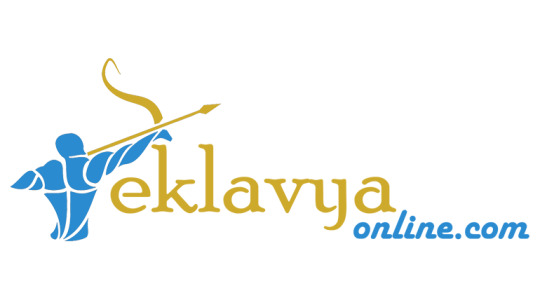
angular 8 notes, angular 8 questions asked in companies, angular 8 questions asked in interview, angular 8 questions asked in mnc, angular 8 questions for interview, angular 8 tutorials, complete notes on angular 8, complete tutorials on angular 8, faq for angular 8, faq on angular 8, interview questions on angular 8, latest interview questions on angular 8, most asked angular 8 interview questions, notes on angular 8, rapid fire on angular 8, rapid fire questions on angular 8, top interview questions on angular 8, tutorials on angular 8, updated interview questions answers on angular 8, angular 8 interview questions
0 notes
Text
faq on angular 8,

angular 8 notes, angular 8 questions asked in companies, angular 8 questions asked in interview, angular 8 questions asked in mnc, angular 8 questions for interview, angular 8 tutorials, complete notes on angular 8, complete tutorials on angular 8, faq for angular 8, faq on angular 8, interview questions on angular 8, latest interview questions on angular 8, most asked angular 8 interview questions, notes on angular 8, rapid fire on angular 8, rapid fire questions on angular 8, top interview questions on angular 8, tutorials on angular 8, updated interview questions answers on angular 8, angular 8 interview questions
0 notes